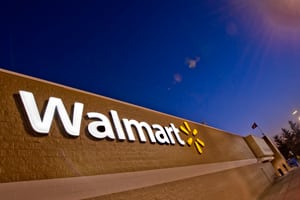 Amazon opened its first brick-and-mortar campus store at Purdue University last week. It is also reportedly in talks with retailers like Radio Shack to give it a more omnichannel presence. One online publication declared this move would be “another nail in the coffin for malls.” Really? That’s a pretty big leap!
Amazon opened its first brick-and-mortar campus store at Purdue University last week. It is also reportedly in talks with retailers like Radio Shack to give it a more omnichannel presence. One online publication declared this move would be “another nail in the coffin for malls.” Really? That’s a pretty big leap!
My bet is on big retail and big-box stores, not Amazon. Walmart, Macy’s and Kohl’s, to name a few, recognize that the new wave of omnichannel retailing is a “do or die” proposition. If you read retail companies’ annual reports, you get an inkling of how high they see the stakes, their investments in omnichannel retail and their use of social networking.
[To learn more about the latest in retail omnichannel strategies, including presentations from Macy’s and Kohl’s, join us at the fourth annual Operations Summit, April 14-16 in Louisville, KY]
Walmart
In Walmart’s 2013 annual report, President and CEO Michael T. Duke tells shareholders about the importance of delivering a seamless shopping experience.
“By bringing together best-in-class online, mobile and social capabilities and our over 10,700 stores, we are building what no other retailer – online or otherwise – can,” Duke said. “We can offer customers a truly seamless experience that empowers them to shop in the way most convenient to them – anytime and anywhere. Over the past year, we have made significant investments in talent and technology to accelerate progress toward that vision.”
“I see customers using a mobile phone to check the price of an item,” Duke said. “The era of price transparency is right here and now and in real time. We welcome Walmart being a showroom for online shoppers.” Is there anyone out there that wants to challenge Walmart on price?
Macy’s
In its 2013 annual report, Macy’s Chairman and CEO Terry R. Lundgren says localization and omnichannel integration are key components of Macy’s strategy and creating a great customer experience.
“Macy’s experience is delivered in stores, online and mobile devices, and we have developed systems and processes to access Macy’s vast inventory in stores and fulfillment centers across the country to fulfill the needs of each of each customer no matter where he or she is located,” Lundgren said.
He also talked about store fulfillment and how it leverages inventory and customer relationships inherent in Macy’s physical locations, supporting an omnichannel strategy that is being driven by emerging customer shopping preferences.
To complement store fulfillment Macy’s will open its fifth mega-center this spring, which will be one of the largest and technologically advanced fulfillment centers in America.
Kohl’s
Kohl’s has one of the highest percentages of omnichannel sales to total sales that I’m aware of. The company’s 2013 annual report talks about its omnichannel business.
“Kohls.com was launched in 2001 and has experienced substantial growth, growing at an annual growth rate of approximately 20% in 2013 and over 40% in 2012 and 2011,” the report states. “Online sales, including shipping revenues, were $1.7 billion and accounted for approximately 9% of our total sales in 2013. Our website currently carries significantly more product offerings than our stores, with a primary focus on extended sizes, product line extensions, and web exclusive product lines. We also are expanding our ability to meet the ever-changing needs of an increasingly technologically-savvy customer. Our in-store kiosks allow customers to order items from our stores and have them shipped to their homes with no shipping charges. All of our stores are equipped with Wi-Fi. We continue to improve our digital and mobile sales platforms.”
Kohl’s 2013 report lists four fulfillment centers in Ohio, Texas, California and Maryland, with a total of 4.82 million square feet dedicated to ecommerce. While that’s not exactly an Amazon in every state, it lets Kohl’s deliver within one day to as much as 80% of the U.S. population. It’s important to note that this growth occurred in a year when Kohl’s total same-store sales was off by 1.3%.
To be sure, there is a ton of retail competition through omnichannel, and the battle is far from over. It will be interesting to see who wins out and how customer shopping changes.
Curt Barry is president of F. Curtis Barry & Company
